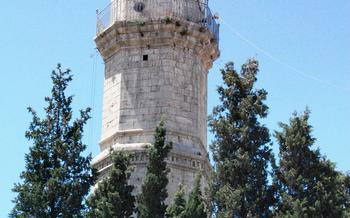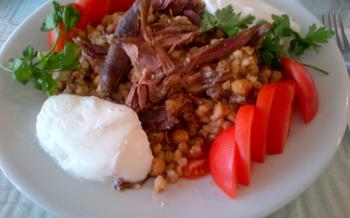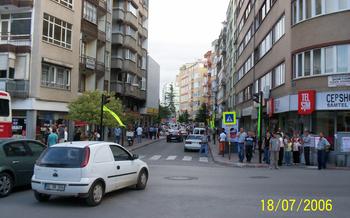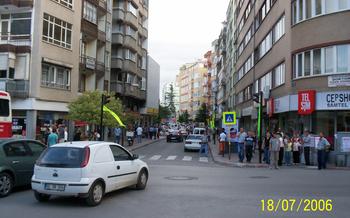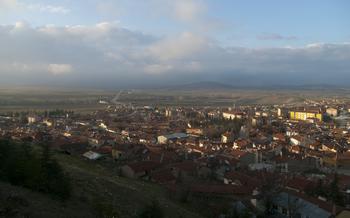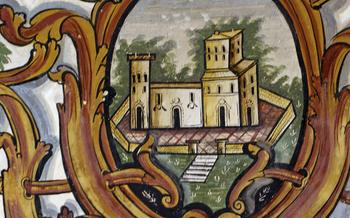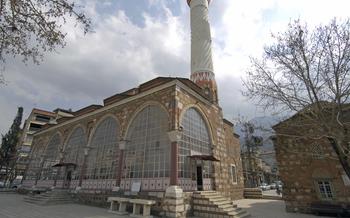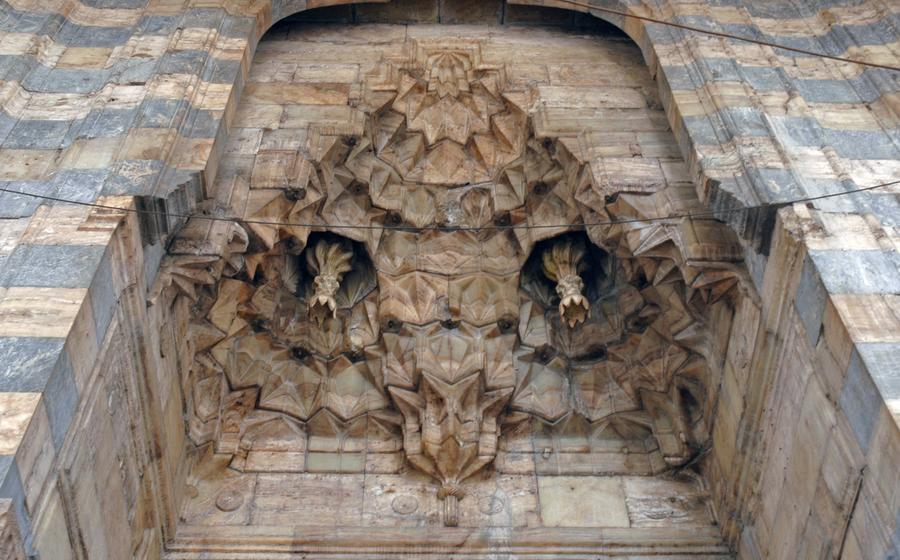
Ali Paşa Mosque
- Historical Significance
- Architectural Marvel
- Religious Importance
- Cultural Landmark
- Local Craftsmanship
- Guided Tours
- Prayer Times
- Dress Code
- Etiquette
- Photography: Capturing the Essence of History and Beauty
- Souvenirs
- Nearby Attractions:
- Plan Your Visit
- Respect Local Customs
Historical Significance
The Ali Paşa Mosque stands as a testament to the rich history and architectural heritage of Tokat. Built in the 16th century during the reign of the Ottoman Empire, the mosque reflects the empire's profound influence on the city's cultural landscape. Its striking architecture, intricate details, and captivating stories make it a significant landmark that draws visitors from around the world.
As you step into the mosque, you'll be transported back in time, surrounded by the echoes of history. Learn about the legends and tales that have been passed down through generations, adding to the mosque's mystique. Discover the significance of the Ali Paşa Mosque as a symbol of Tokat's Islamic heritage, representing the city's deep-rooted connection to its faith and traditions.
Architectural Marvel
The Ali Paşa Mosque stands as a testament to the architectural brilliance of the Ottoman Empire. Its stunning facade, a harmonious blend of Seljuk and Ottoman styles, captivates visitors with its intricate details and grandeur. The mosque's exterior boasts an impressive dome, symbolizing the heavens, and four slender minarets, reaching towards the sky like celestial spears. These minarets, adorned with intricate carvings and patterns, serve as a call to prayer, echoing through the city's streets.
Upon entering the mosque, visitors are greeted by a breathtaking interior adorned with vibrant tiles, intricate calligraphy, and colorful stained-glass windows. The walls and ceilings are adorned with verses from the Quran, beautifully inscribed in elegant calligraphy, adding to the mosque's spiritual and artistic significance. The central prayer hall, with its rows of intricately carved pillars and arches, creates a sense of awe and tranquility, inviting worshippers to immerse themselves in prayer and contemplation.
Religious Importance
The Ali Paşa Mosque holds immense religious significance as a sacred place of worship for Muslims. Daily prayers, including the five obligatory prayers, are held at the mosque, attracting a large number of worshippers. During these prayers, the mosque's interior resonates with the melodious recitation of the Quran, creating a serene and spiritual atmosphere. Visitors can observe the traditions and customs followed by worshippers, such as performing ablution before entering the prayer hall and standing in rows facing the qibla. The mosque's vibrant community spirit is evident during congregational prayers, where worshippers come together to pray and strengthen their bond of faith.
Cultural Landmark
The Ali Paşa Mosque stands as a proud symbol of Turkish culture and identity. Its architectural grandeur and spiritual significance have made it an integral part of Tokat's cultural landscape. The mosque has played a pivotal role in shaping the city's cultural identity, serving as a center for religious, social, and educational activities.
Throughout history, the Ali Paşa Mosque has witnessed various cultural events and festivals that showcase the vibrant traditions of Tokat. These events bring together the community to celebrate their shared heritage and strengthen their cultural bonds. From traditional music performances to religious ceremonies, the mosque serves as a platform for cultural expression and exchange.
By visiting the Ali Paşa Mosque, you will gain a deeper understanding of Turkish culture and its rich traditions. Engage with locals, learn about their customs, and immerse yourself in the vibrant atmosphere of this cultural landmark.
Local Craftsmanship
The Ali Paşa Mosque is a testament to the exquisite craftsmanship of local artisans. Every detail of the mosque, from its intricate tilework to its carved woodwork, showcases the skill and dedication of these talented individuals. The tiles, featuring vibrant colors and geometric patterns, were meticulously hand-painted using traditional techniques passed down through generations. The intricate calligraphy adorning the mosque's interior was created by master calligraphers, who spent countless hours meticulously inscribing verses from the Quran and other religious texts. The woodwork, featuring delicate carvings and inlaid mother-of-pearl, was crafted by skilled carpenters who took pride in their work. By appreciating the craftsmanship showcased in the Ali Paşa Mosque, visitors can gain a deeper understanding of the rich cultural heritage of Tokat and the artistry that went into creating this architectural masterpiece. Support local artisans by purchasing handmade souvenirs inspired by the mosque's designs, such as tiles, pottery, and textiles. These souvenirs not only serve as a reminder of your visit but also help preserve traditional crafts and support the local economy.
Guided Tours
Enhance your visit to the Ali Paşa Mosque by joining a guided tour. Learn about the mosque's history, architecture, and religious significance from knowledgeable guides. Ask questions and gain insights into the mosque's unique features and stories. Guided tours are an excellent way to make the most of your visit, especially if you're interested in delving deeper into the mosque's cultural and historical context.
Book your tour in advance to secure your spot and avoid disappointment. Many tour operators offer guided tours of the Ali Paşa Mosque, so you can choose one that fits your schedule and interests. Whether you're a history buff, an architecture enthusiast, or simply curious about Turkish culture, a guided tour will provide you with a richer and more fulfilling experience.
Prayer Times
When visiting the Ali Paşa Mosque, it is essential to be mindful of prayer times. Respect for local religious practices is paramount, and observing these times ensures a peaceful and respectful environment for worshippers.
To avoid any disruption, find out the daily prayer schedule in advance. This information can be obtained from the mosque's official website, local tourist information centers, or by asking a knowledgeable local.
During prayer times, visitors should refrain from entering the prayer hall and maintain a respectful distance. It is also important to dress modestly and avoid any actions that may be considered disrespectful, such as talking loudly or taking photographs.
The mosque provides facilities for ablution before entering the prayer hall. Visitors are encouraged to use these facilities to ensure they are properly cleansed before participating in prayers.
By observing prayer times and dressing appropriately, visitors can demonstrate respect for local customs and traditions, ensuring a harmonious and enriching experience for all.
Dress Code
Adhere to the dress code when visiting the Ali Paşa Mosque to show respect for local customs and traditions. Dress modestly and cover your shoulders, chest, and knees. Women should cover their heads with a headscarf or shawl. Avoid wearing revealing or tight clothing that may be considered disrespectful. By following the dress code, you demonstrate your understanding and appreciation of the mosque's cultural and religious significance, ensuring a respectful and harmonious environment for all visitors.
Etiquette
Observe proper etiquette while visiting the Ali Paşa Mosque to ensure a peaceful and respectful environment. Be mindful of your voice level and avoid talking loudly or disturbing other visitors. Respect the sanctity of the mosque by refraining from engaging in inappropriate behavior or activities. Follow any specific guidelines or instructions provided by the mosque's management. By adhering to proper etiquette, you can contribute to a harmonious and welcoming atmosphere for all visitors.
Photography: Capturing the Essence of History and Beauty
Photography enthusiasts will find the Ali Paşa Mosque a treasure trove of captivating subjects. The mosque's stunning architecture, intricate details, and vibrant colors offer endless opportunities to capture the essence of its history and beauty.
When photographing the mosque, remember to ask for permission before taking photos of people, especially during prayer times. Respect the sanctity of the space by avoiding flash photography, which may disturb worshippers or damage the mosque's delicate interior.
After your visit, share your photos responsibly, ensuring that they represent the mosque's cultural and religious significance accurately. Your images can help spread awareness about this magnificent architectural marvel and its enduring legacy.
Souvenirs
Purchase souvenirs from the Ali Paşa Mosque to cherish your visit and support local artisans. Find a variety of souvenirs, including prayer rugs, prayer beads, calligraphy art, and miniature replicas of the mosque. Bargain politely with vendors to get the best prices and support fair trade practices. Remember to pack your souvenirs carefully to protect them during your travels.
You can find a variety of souvenirs at the Ali Paşa Mosque, including prayer rugs, prayer beads, calligraphy art, and miniature replicas of the mosque. These souvenirs are a great way to remember your visit and support local artisans.
When bargaining with vendors, be polite and respectful. Start by offering a lower price than the asking price, and be prepared to walk away if the vendor is not willing to negotiate. It is also important to remember that haggling is a part of the culture in Turkey, so don't be afraid to bargain.
Once you have purchased your souvenirs, be sure to pack them carefully to protect them during your travels. You can use bubble wrap or tissue paper to wrap your souvenirs, and then place them in a sturdy bag or suitcase.
Nearby Attractions:
Enrich your Tokat experience by exploring nearby attractions that complement the Ali Paşa Mosque visit. Discover the Tokat Castle, a majestic fortress that offers panoramic city views. Delve into the region's history and cultural heritage at the Tokat Museum. Immerse yourself in the vibrant local culture at the Tokat Bazaar, a bustling marketplace with diverse shops and eateries. Find respite along the scenic Yeşilırmak River, where you can unwind amidst breathtaking natural landscapes. These attractions provide a comprehensive Tokat experience, allowing you to delve deeper into the city's rich tapestry of history, culture, and natural beauty.
Plan Your Visit
To make the most of your visit to the Ali Paşa Mosque, careful planning is essential. Begin by checking the mosque's opening hours to avoid disappointment. Dedicate ample time to explore both the mosque's interior and exterior, marveling at its intricate details and architectural features. If you have the opportunity, consider visiting during the shoulder season (spring or fall) to avoid the summer crowds and enjoy milder weather conditions. This will allow you to fully appreciate the mosque's beauty and tranquility without the distractions of large tourist groups.
Respect Local Customs
When visiting the Ali Paşa Mosque, it is essential to show respect for local customs and traditions. Avoid engaging in public displays of affection or loud conversations, as these may be considered disrespectful. Be mindful of your behavior and actions to ensure that you do not offend local sensibilities. Additionally, consider learning a few basic Turkish phrases to communicate with locals and show your appreciation for their culture. This will help you connect with the community and enhance your overall experience.
